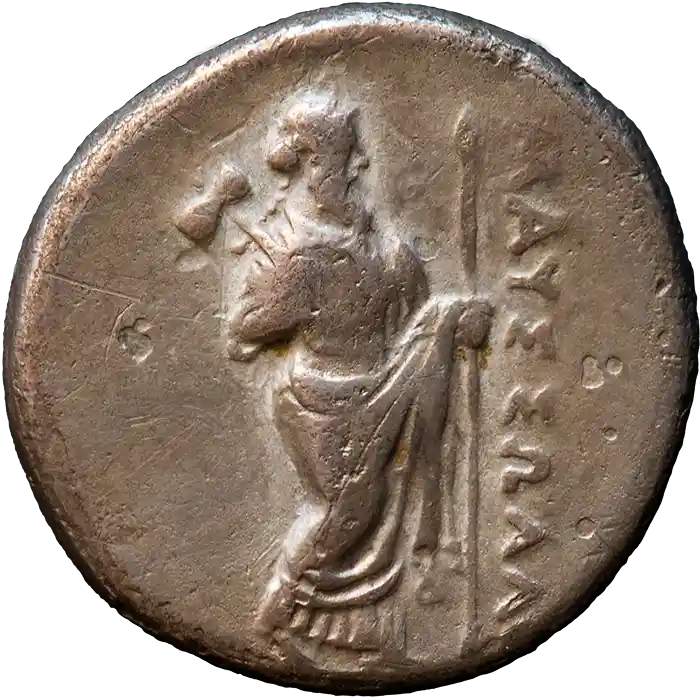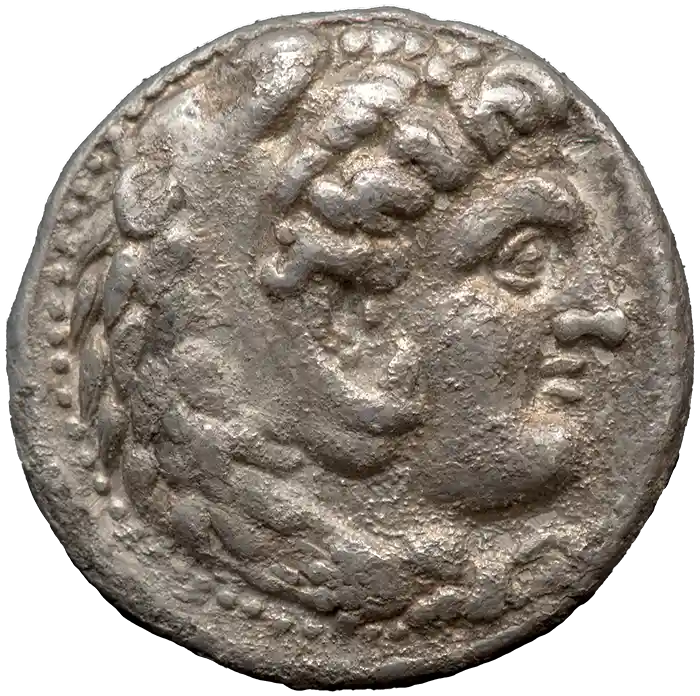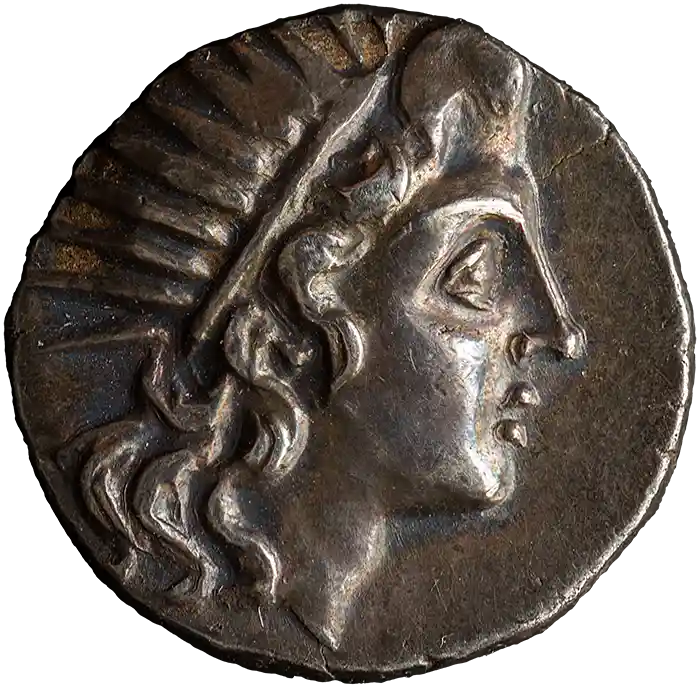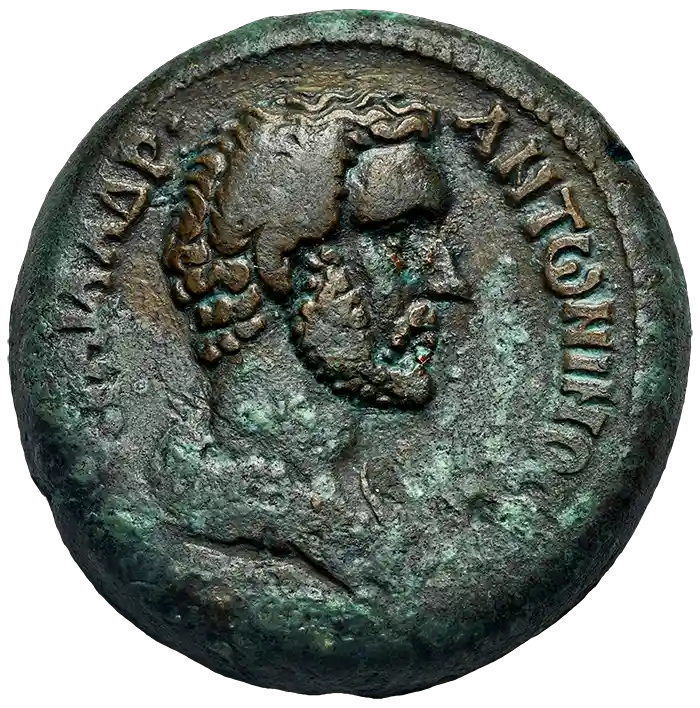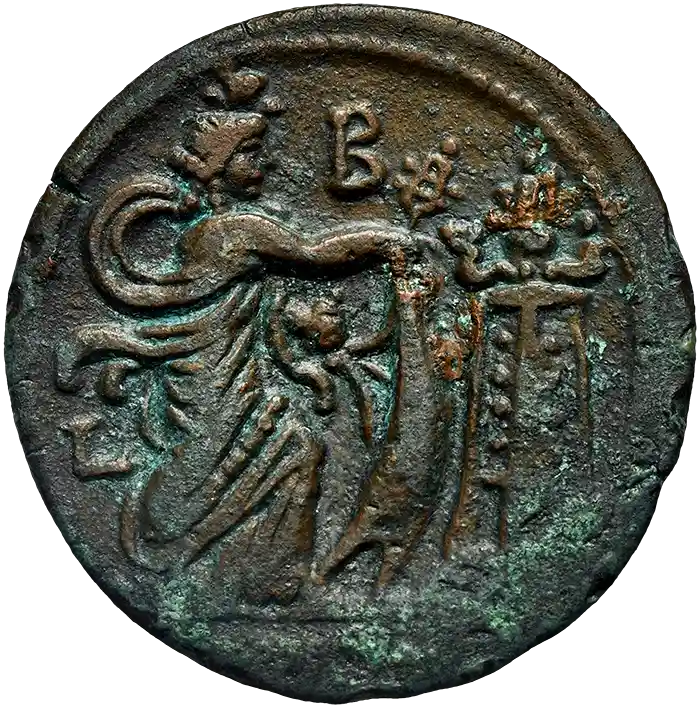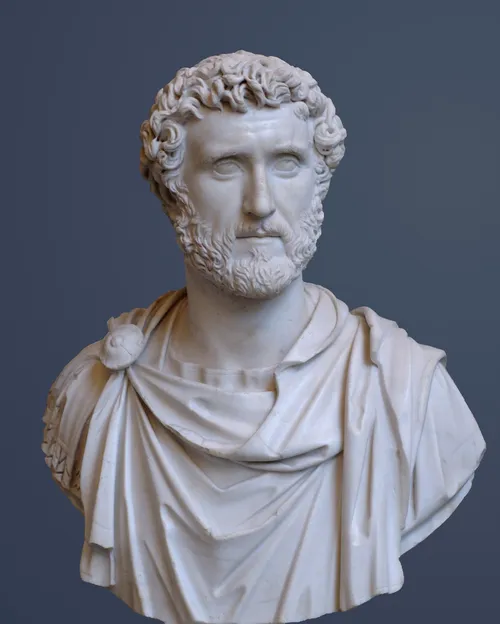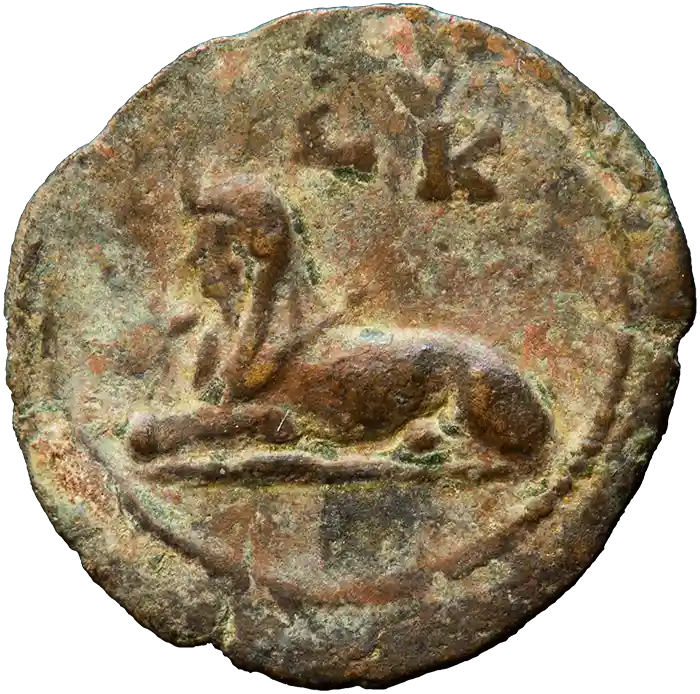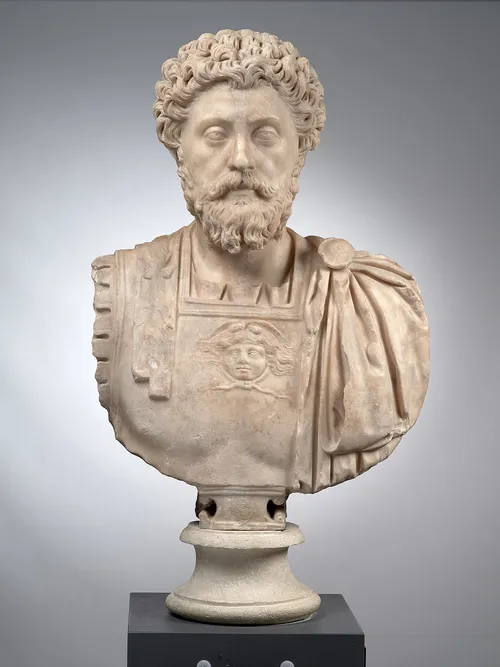ISLANDS off CARIA
Rhodos AR 'Plinthophoric' Drachm
- - - - - - - - - - - - - - - - - - - - - - -
Anaxidotos magistrate
- - - - - - - - - - - - - - - - - - - - - - -
These drachms were called 'plinthophoric' from the Greek plinthos = brick or ingot, for the incuse square that contains the design.
The head of Helios might represent the Colossus of Rhodes, one of the 7 wonders of the Ancient world, particularly in a series of didrachms according to Richard Ashton. However, those didrachms were coined before the construction of the Colossus, while this drachm, belonging to Jenkins Group A, was coined around 35 years after the earthquake that caused the destruction of the Colossus, while the pieces were still visible (they stayed visible for a long time, as Pliny tells us). The profile is constant with time and with the different magistrates, and there are similarities with the facing head of Helios as well.
The reverse depicts a rose (Greek rhodon) and it refers to Rhodes as a canting symbol, making a sort of pun of the name.


